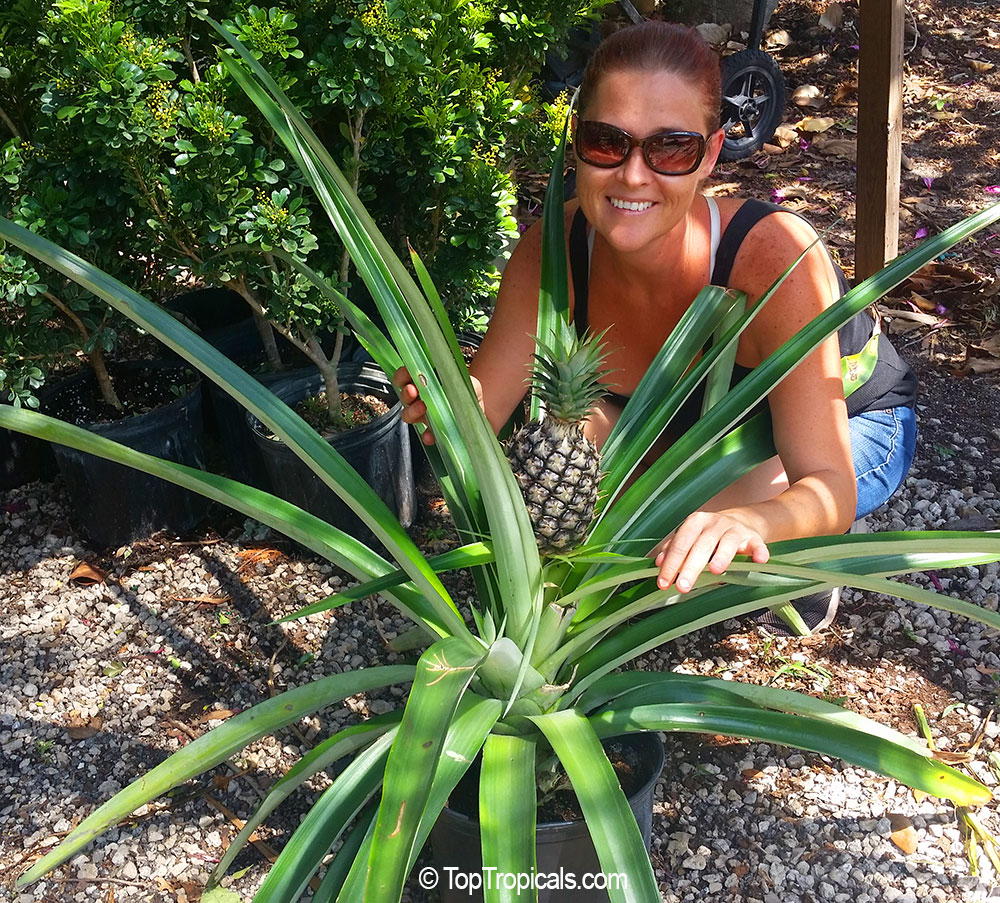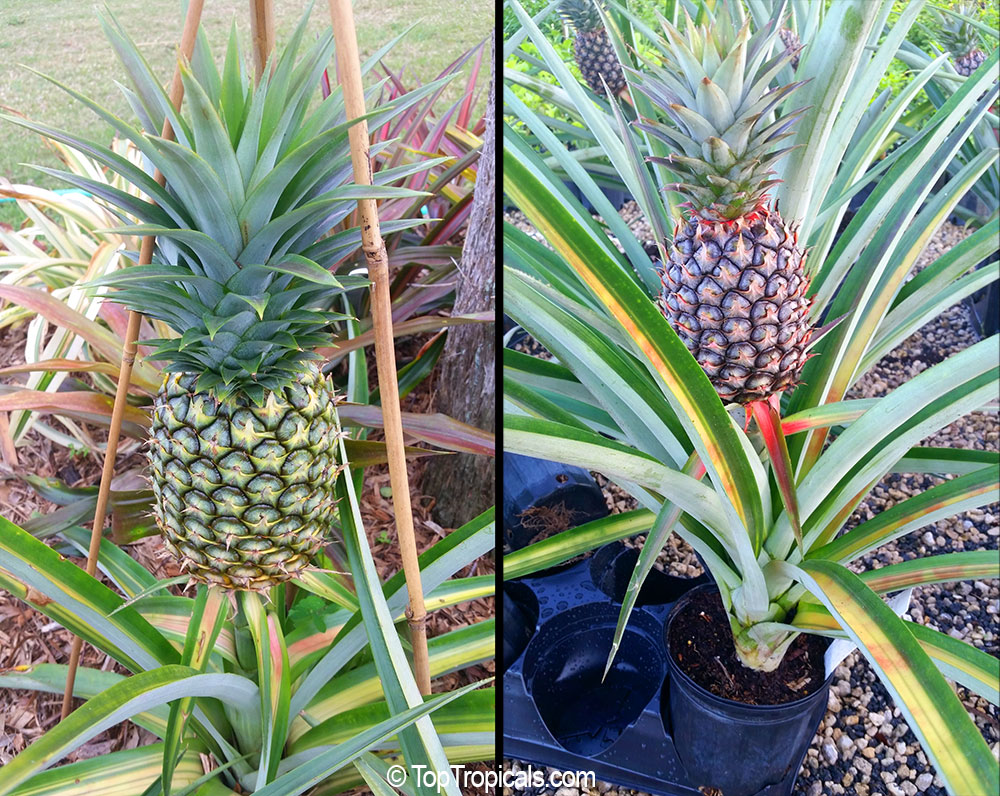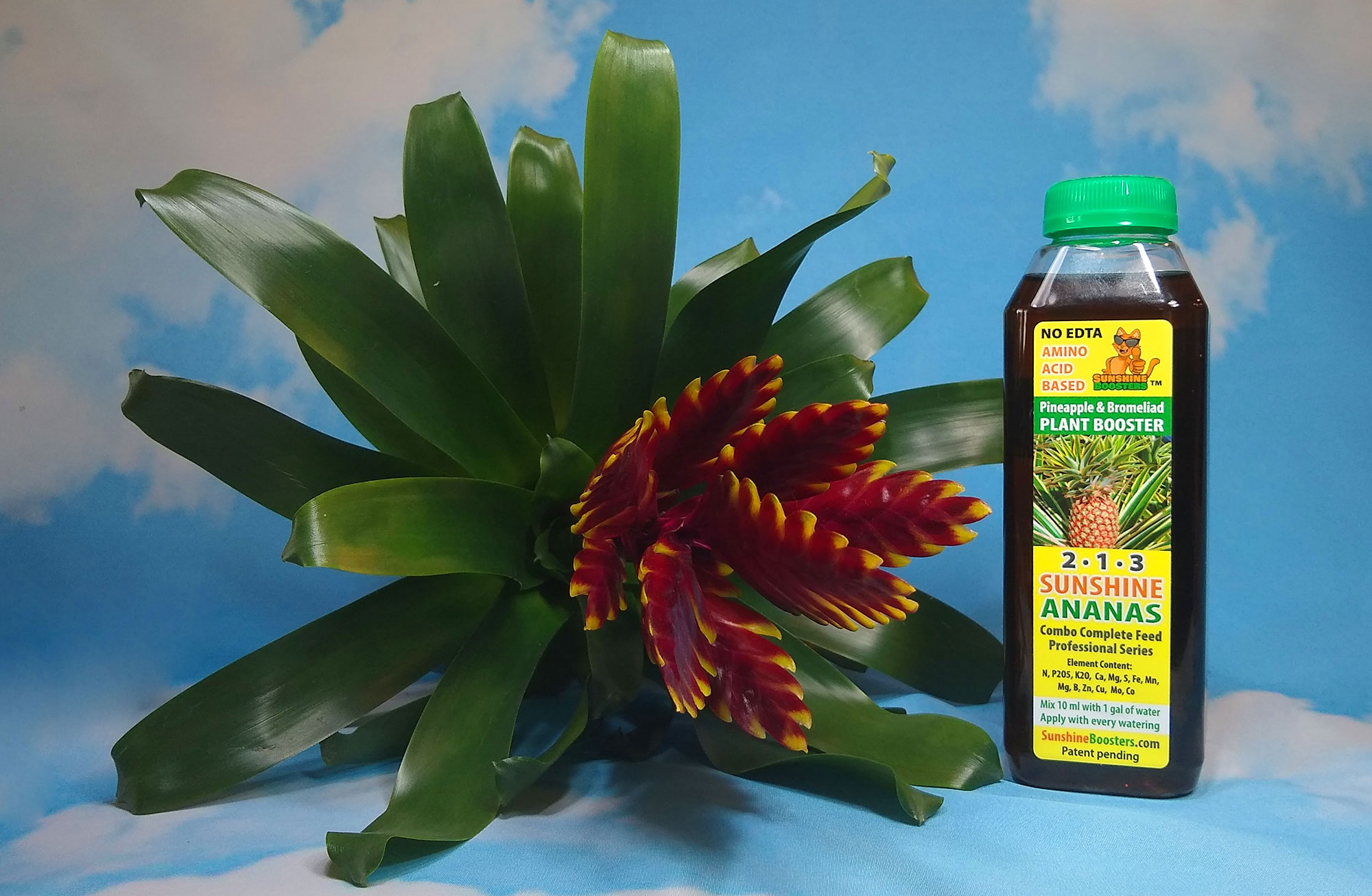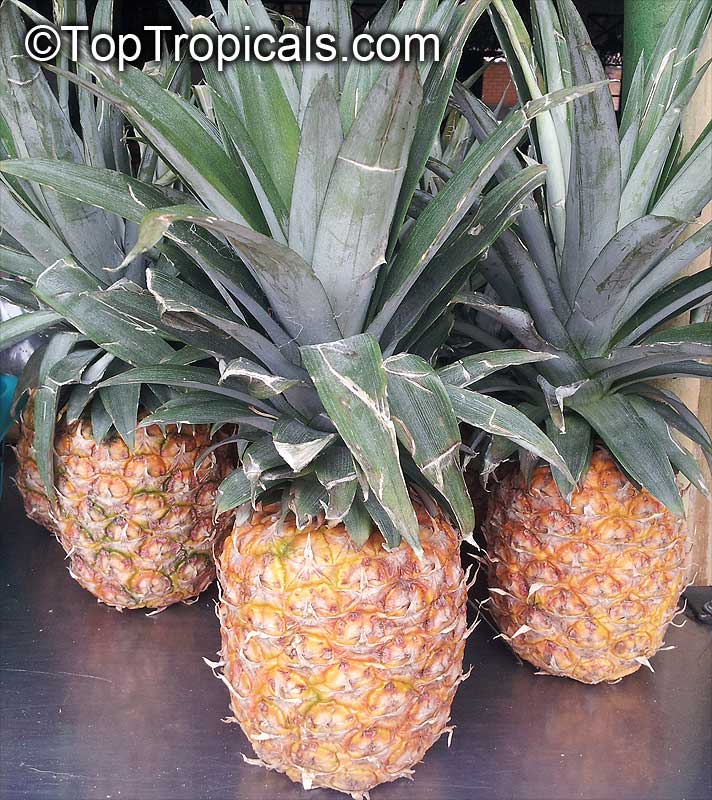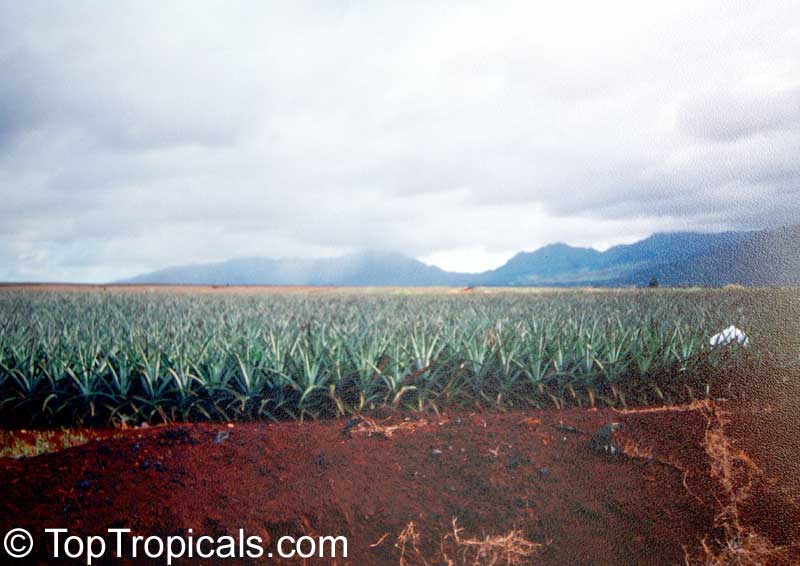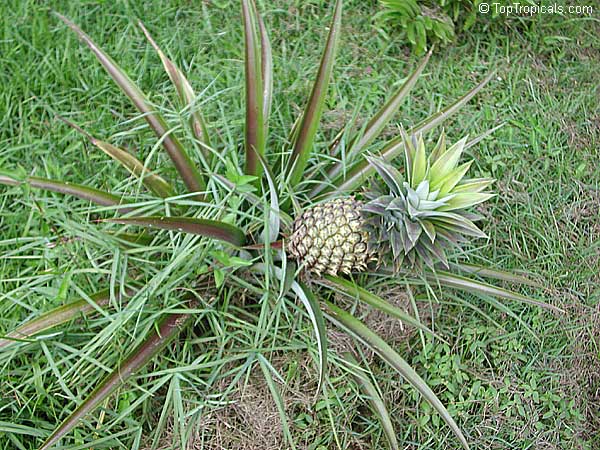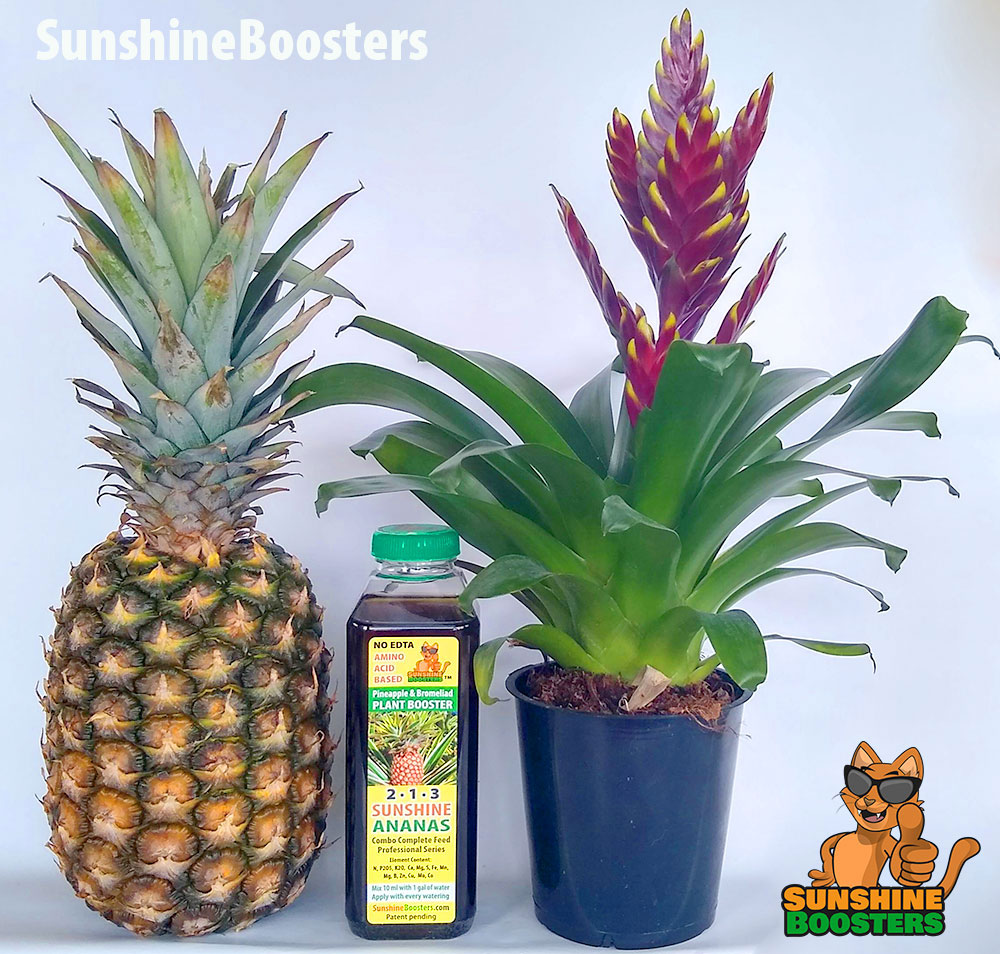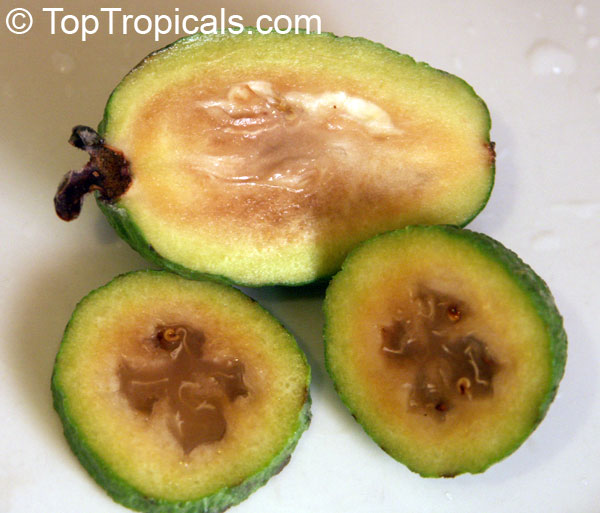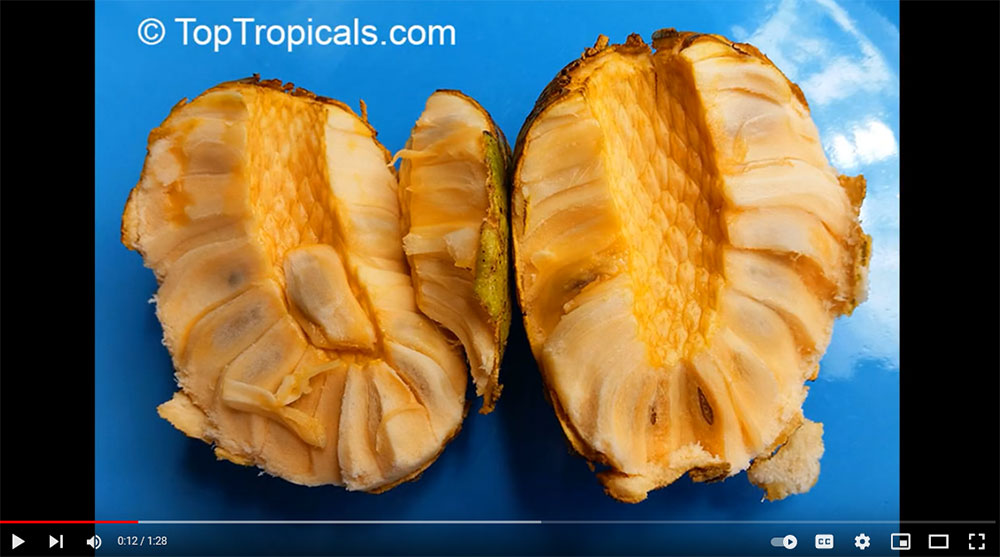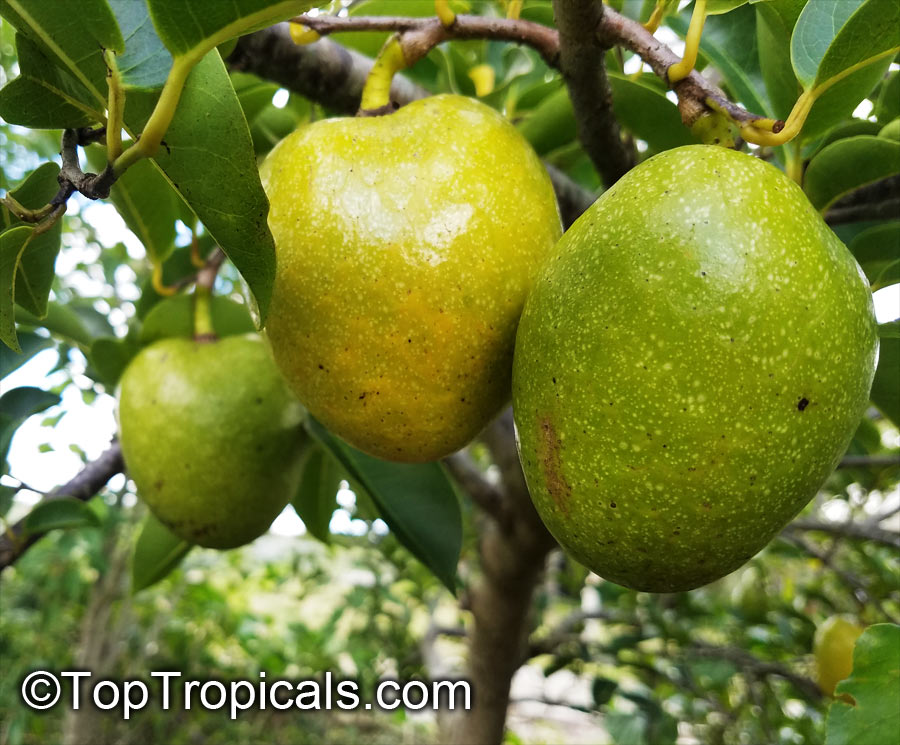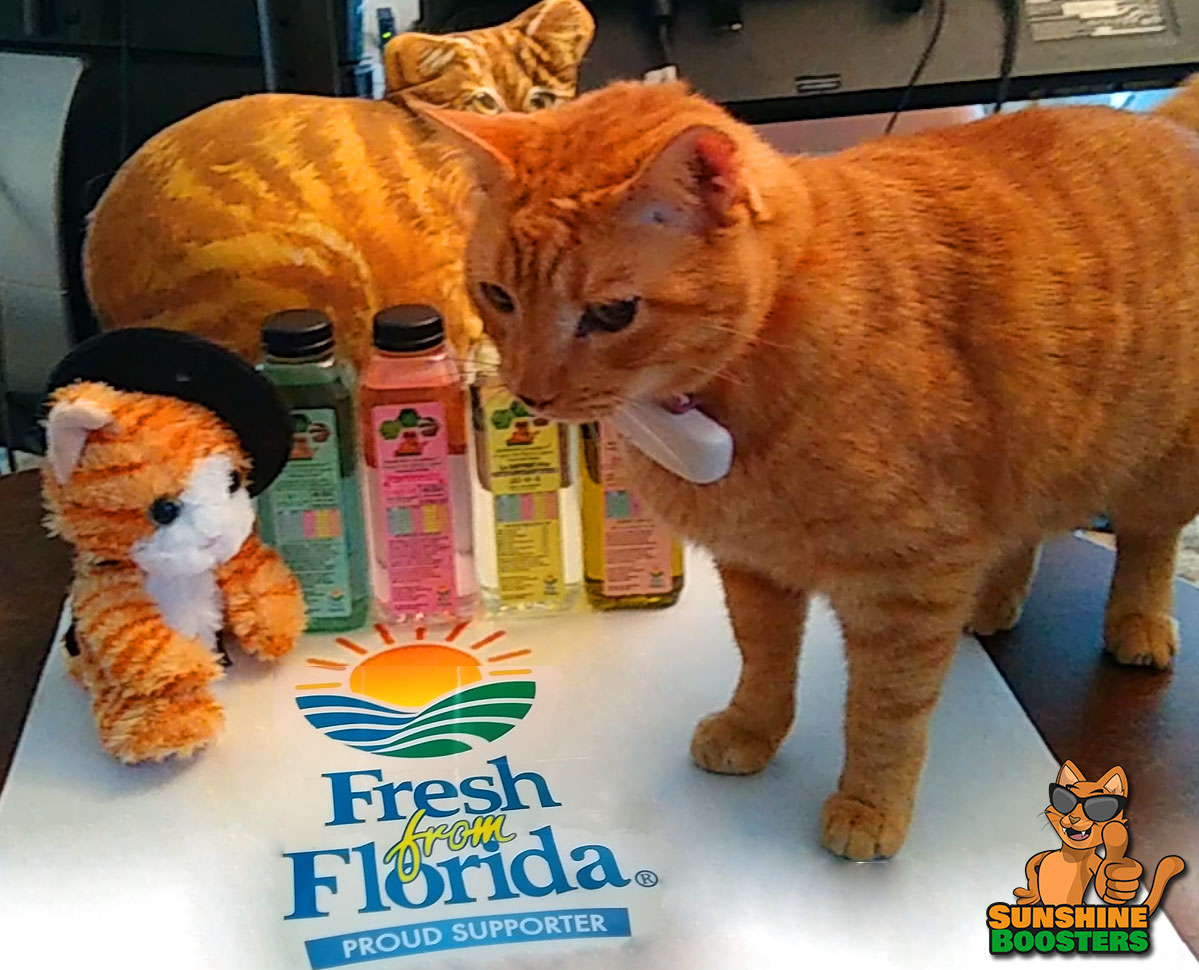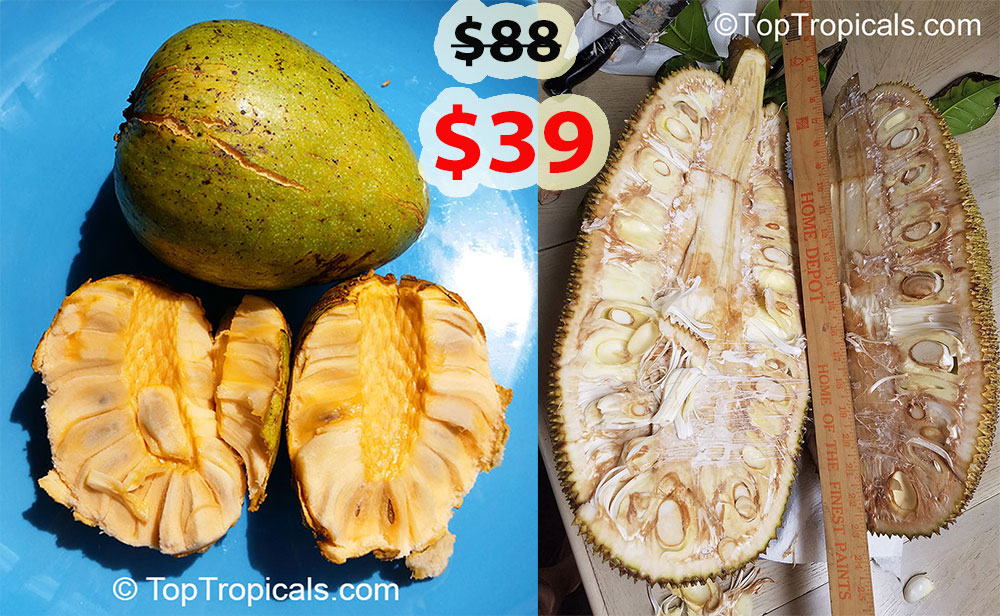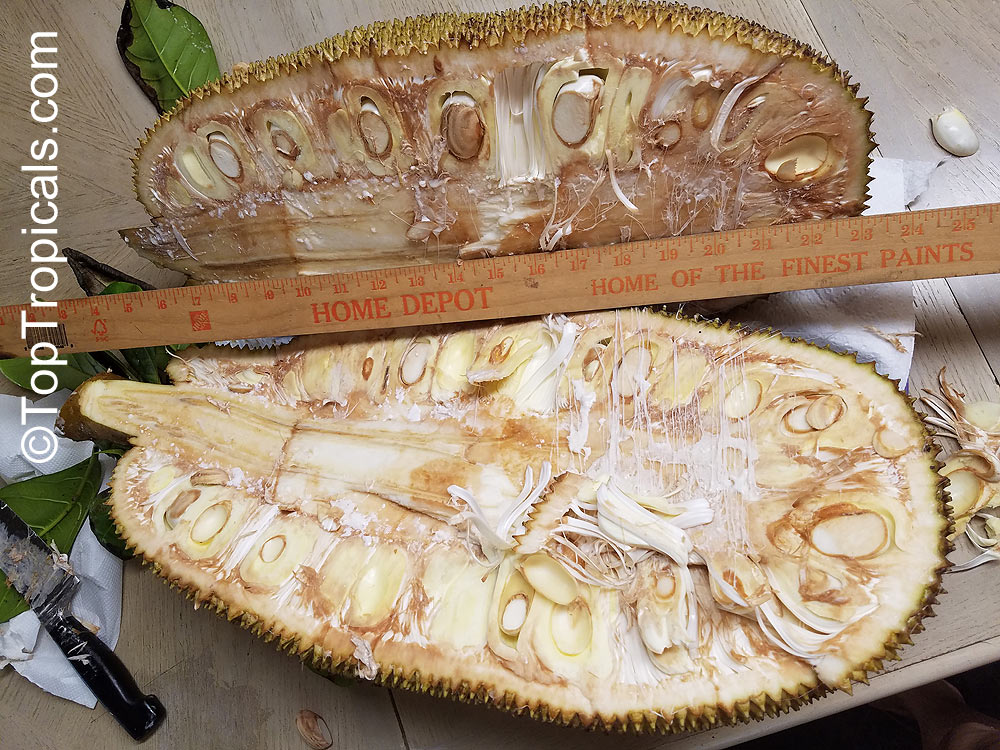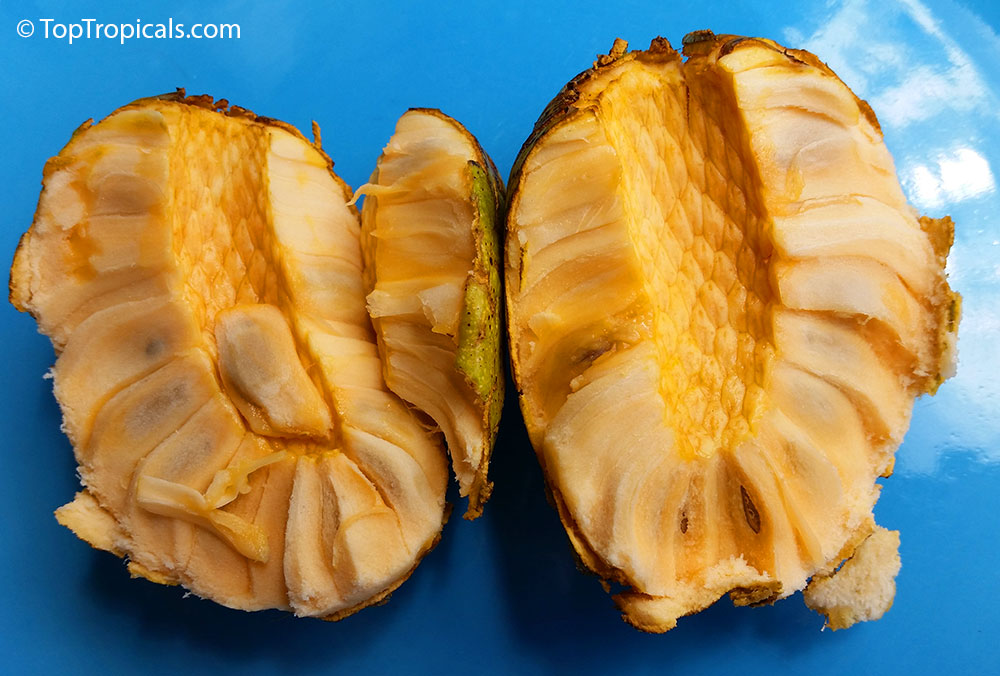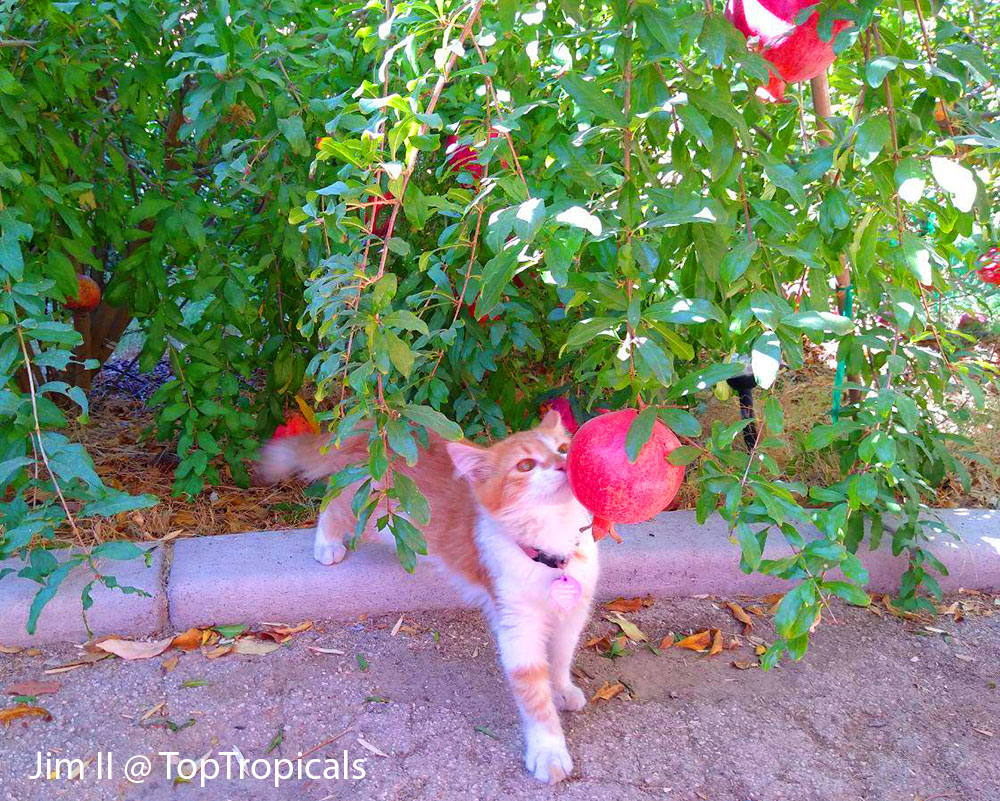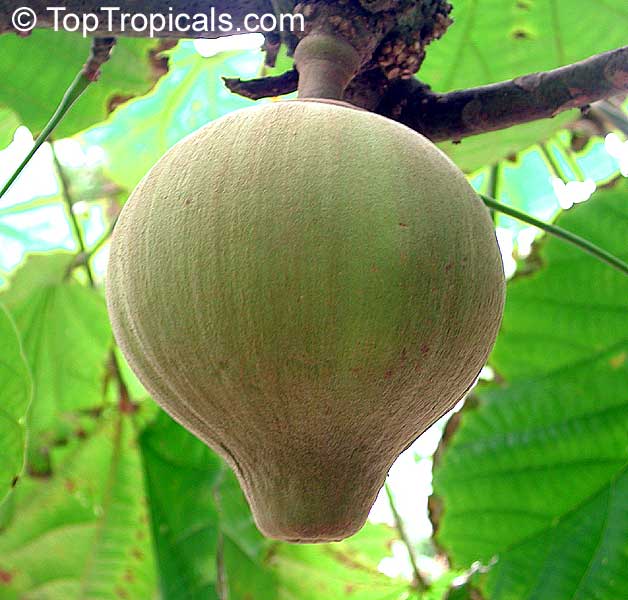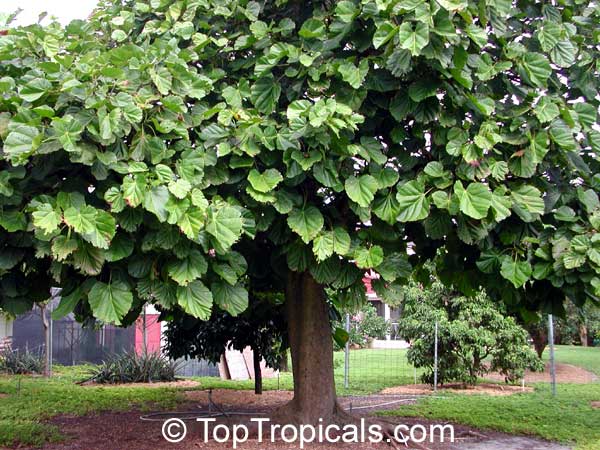Garden Blog - Top Tropicals
Date:
Five benefits of growing your own Pineapple
Q: Can I grow my own pineapple fruit?
A: Growing a Pineapple plant - Ananas comosus - is a fun and rewarding experience that offers both visual and practical benefits:
1. Fresh, homegrown fruit: One of the main benefits of growing a pineapple plant is that you can enjoy the fruits of your labor by harvesting fresh, delicious pineapples right from your own backyard.
2. Aesthetic appeal: Pineapple plants are visually appealing with their long, spiky green leaves and bright, vibrant fruits. They can add a tropical, exotic touch to any garden or indoor space.
3. Low maintenance: Pineapple plants are relatively easy to grow and require minimal maintenance. They can tolerate a variety of soil and light conditions and don't require frequent watering or fertilization.
4. Health benefits: Pineapple fruit is rich in vitamins, minerals, and antioxidants that can provide a range of health benefits, including improved digestion, boosted immunity, and reduced inflammation. It is recommended to eat a slice of a pineapple after every meal to keep healthy digestive system.
5. Collectable varieties: The pineapple plant can be easily propagated by cutting off the top of a pineapple fruit. However, for those seeking excellent quality, it is recommended to choose superior hybrids from professional growers. Become the proud owner of "The King of Fruits" collection! It takes up minimal space and provides fresh fruit throughout the year.
Read more about Pineapple: The most luscious Hospitality Fruit - Pineapple.
Remember to add Sunshine Ananas fertilizer to your purchase for a long lasting Pineapple crop season.
Date:
Healthy Plants: Q&A from Mr Booster
Pineapple Season is Here!
Pineapple season is here and people often ask, "how do you get them to grow?" Well, the answer is simple really. One method involves cutting the top off a pineapple, prepping it and then planting it. You can find several different ways to do this with a short Google search. Of course the easiest way is to purchase plants that have already been started. You can do that here...
CONTINUE READING >>
Date:
The most luscious Hospitality Fruit: Pineapple
by Mark Hooten, the Garden Doc
I wonder how many people know that the Pineapple (Ananas comosus) was actually the very first New World
tropical fruit to have been sampled fresh by European royalty? It happened 527
years ago, when one made it to Spain, being personally delivered to King
Ferdinand and Queen Isabella by Christopher Columbus... He had obtained a huge number
of them, however only one actually survived intact and edible! That
pineapple was instantly declared to be the most luscious wonderful fruit ever!..
...During the 1700s before the Revolutionary War, the overly monetarily
intoxicated super-rich were actually paying a modern equivalent ofâ - get this
- 8000 dollars for a single fruit!..
...In conclusion, I will add the simple recipe for my personally favorite
go-to comfort food...
CONTINUE READING >>
Date:
The Best Pineapples
Q: What varieties of the Pineapple are the best for planting in Florida? When do they fruit? I have a small yard, with a room for one or two, but can I keep more in pots? I am excited to grow my own pineapples!
A: Pineapple is truly the King of fruits! One of the most
delicious fruits in the world. They start flowering from January to March in Florida
and yes, they happily grow in the ground as well as in pots. Heaviest
fruiting is in Summer (May to September), and some staggered throughout the year.
Be careful with watering, keep in mind that like any bromeliad, Pineapple
needs very little water and needs the soil to get dry between waterings. Use
only acidic soil and acidic plant food.
Make sure to feed these plants on regular basis, especially if grown in
pots. Pineapples are heavy feeders but are also very sensitive like all
bromeliads, so be careful with traditional fertilizers, do not exceed recommended
dosage. It is safe to use liquid amino-acod-based Sunshine Boosters Ananas fertilizer year round.
The mot popular pineapple varieties for home growers
are:
Elite
Gold
Royal
Hawaiian - Royale
Sugar
Loaf
Date:
Flavor of Feijoa Superfood
by Onika Amell, tropical plant specialist
Q: What exactly is Feijoa - Pineapple Guava? Does the fruit really taste like pineapple? I am curious to know if it is easy to grow.
A: Feijoa is certainly one of the easiest fruit trees to grow as it does
not require much care. It is an attractive, evergreen tree or large shrub with
dark green, oval, leathery leaves. It has an abundance of uses in the garden
and produces lovely edible flowers and fruit! The fruit is eaten fresh,
added to smoothies or fruit salad and is also commonly used to make delicious
jams and wicked chutneys. Feijoa fruit go a long way in flavor.
This plant is drought tolerant and will grow in almost any soil type. It
loves full sun or partial shade and is wind resistant. A lot of gardeners like
to grow it as a wind barrier for this reason. It can easily be shaped into a
dense, informal hedge or screen that needs very little pruning. Because of
this density, it provides excellent shelter for all kinds of wildlife.
Butterflies, birds, and butterflies will all love you for growing Feijoa!
Space the plant five feet apart to create a wind barrier hedge. Heat does
no not bother it at all and it will also withstand temperatures to 10 degrees
F.
The plant gets its names from the delicious perfume it emits. Some folks
seem the fruit taste like pineapple, with a slight minty undertone. Others feel
the flavor reminds them of juicy fruit gum! The texture is described as
smooth and slightly gritty - almost like a pear, but firmer.
If you prefer to grow this plant as a tree rather than a large shrub,
simply remove the lower branches up to one-third of the tree's height over a
period of time. The Pineapple Guava can grow up to 15 feet wide and tall. They
also do really well as a container plant on patios where you can truly enjoy the
lovely fragrance of the fruit. It prefers rich, organic, well-drained soil
and will need light fertilization every other month in most soils.
We recommend:
Fruit Festival Plant Food - Super Crop Booster
Mango-Food - Smart Release Fruit Tree Booster
SUNSHINE-Honey - Sugar booster
SUNSHINE C-Cibus - Crop Nutrition Booster
Pretty, pink, edible flowers will wow you from May to June, followed in late summer or fall by the delicious and fragrant fruit. An interesting thing about this fruit is that you don't pick it. It falls to the ground when it is ripe. Or simply place something under your tree, like a tarp, and shake the tree. The ripe fruit will fall off. You can store the fruit in your refrigerator for up to a week. And remember! The fruit of the Feijoa is not only a very rich source of soluble dietary fiber, but also an excellent source of Vitamin C, and very rich in antioxidants. They are also low in calories. Each fruit only holds 55 calories.
Date:
New Video:
Golden Sugar Apple - Pineapple Annona
In this video we talk about a rare hybrid of Annona - Golden Sugar
Apple. This rare Annona is a species originally brought to us from Costa Rica. We
believe it to be a natural hybrid between A. muricata and A. glabra...
Fast growing, it forms a nice bushy specimen. It has a large, up to 1 lb
fruit, green when unripe, turning dark yellow to orange on ripening. The pulp
is golden to orange when ripe, with a strong Pineapple scent, and resembling
Jackfruit in texture. Flavor is like the custard apple but with pineapple,
papaya, apricot and melon overtones. Note that some people dislike the taste,
others find it good...
The tree tolerates flooding. It is also cold hardy! The plant would be very
interesting for rare fruit collectors as it offers a large, exotic fruit of
unusual color and taste, and appears to be much more hardy and water tolerant
than similar looking but sensitive A. muricata, A. montana and Rollinia.
Subscribe to our Channel:
Stay updated with TopTropicals Videos by subscribing to our channel at YouTube.com/TopTropicals and get our latest video news of what is fruiting and blooming!
Date:
Healthy Plant Food: Q&A from Mr Booster
How to make pineapples fruit?
Q: I have purchased a Sugar Loaf Pineapple from you a few months ago, it is growing well and producing little babies around the main plant! I am so excited to have my own Pineapple plantation! How soon will they fruit and is there anything I can do to make them fruit faster? Can I give extra fertilizer just like I do for other garden plants?
A: It takes a year or two until a pineapple plant gains enough
energy to be ready to fruit. However the total time depends on growing
conditions and availability of all necessary nutrients.
Pineapples, like all other plants from Bromeliaceae family require very
delicate fertilizer; traditional fertilizers, if overdosed, can harm Bromeliads
and even kill them. At the same time, Pineapples require extra Magnesium for
good production, and not every fertilizer has it, or contains it in
well-accessible compounds / proper proportions.
Sunshine Ananas Booster is a scientifically formulated, mild fertilizer,
designed especially for tender Bromeliads, containing Magnesium just in perfect
concentration. Its amino-acid based ingredients are natural and work perfectly
for edibles and organic gardens. Just follow the label instructions and speed
up the fruit production 3-4 times!
In the photo: Mr B checking his Sunshine Boosters inventory before shipping to his Good Customers.
Date:
Golden Sugar Apple and Jackedak Cheena
50% OFF and MORE!
We've combined the exotic fruit of this rare Annona from Costa Rica - Golden Sugar Apple with the sweet, crunchy and excellent flavor of the Jackedak Cheena. Both rare and unique plants can be yours at considerable savings, but don't delay as there are limited quantities in stock.
Rare Fruit Collection:
two Jackfruit-textured rare fruit!
For this Easy Sunday we have priced these at incredible savings:
The
Golden Sugar Apple regularly $39, is on Easy Sunday sale for only $19
The
Jackedak Cheena, regularly $49, is on Easy Sunday Sale for only $24
.
Combine the two for your own Rare Fruit Collection and save even more, only $39 for the set!
Jackedak Cheena
Artocarpus x integer (Jackfruit x Chempedak) - Jackedak Cheena has been grown in TopTropicals garden from a seedling and fruited within 3 years from planting. The fruit is the best we ever tasted! It is super sweet, crunchy, with a rich, excellent flavor, with very little latex which makes it easy to handle when cutting up. Our tree survived light frosts as well as 48 hours of 3 ft flooding, with no damage! Cheena is a natural hybrid between Jackfruit and Chempedak with low and spreading growth habit, can be maintained at 8 ft with annual pruning.
Picture of 3 y.o. Cheena at Top Tropicals garden, loaded with fruit:
Golden Sugar Apple
The Golden Sugar Apple or Pineapple Annona originally was brought to us by our customer from Costa Rica. We believe it to be a natural hybrid between A. muricata and A. glabra. It is a very ornamental small tree similar in growth habit to A. muricata, A. montana or Rollinia. Fast growing, forms nice bushy specimen. Fruit is very large, up to 1 lb, golden to orange when ripe, with strong Pineapple scent, and resembling Jackfruit in texture, with pineapple, papaya, apricot and melon overtones. The tree tolerates flooding and is cold hardy at least to upper 20's. Very interesting for rare fruit collectors as much more hardy and water tolerant alternative to its sensitive relatives Soursop and Rollinia.
Picture of 3 y.o. tree full of fruit:
Remember, the Easy Sunday special has been extended through Wednesday, December 15th. Limited availability, hurry up! All orders over $75 (excluding S&H) are eligible for 20% off!
For 20% off - use code YEAREND20
Min. order $75 (excluding S&H). Good through December 15th
Enjoy your Holiday Tropical Fruit!
Photo above: Jim is Holiday decorating with super-sweet tropical fruit balls - Pom-Poms!
Date:
Ever heard of Chupa-Chupa?
By Mark Hooten, the Garden Doc
...I wonder how many knowledgeable people here have even heard of the
national fruit of Brazil? Ever heard of the chupa-chupa tree? Almost no-one in this country has, unless they are
either Brazilian by birth, or perhaps visit there regularly, exploring the
abundant fresh-fruit markets. It is a magnificent fruit tree, and deserves to be
better known here...
The flesh inside is bright orange, very sweet, and especially juicy!
...Something you might imagine as an unlikely cross of cantaloupe and pineapple,
and that it is especially juicy similar to a good pineapple...
CONTINUE READING >>
Date:
Monstera deliciosa - Swiss cheese plant
Swiss cheese plant is a jungle climbing relative of the philodendron from Mexico and Guatemala. It is seen in gardens in tropical and subtropical areas, growing well in partial sun or shade. The plant begins bearing fruit after three years. The large deep green, cone-like fruit is actually an unripened flower spike, covered with hexagonal scales that dry out and separate as the fruit ripens from the base upwards, revealing the white pulp. It takes a little longer than a year to mature to an edible stage. The fruit tastes kind of like a cross between a sugar apple and a pineapple. Very perfuming smell and taste! It's so amazing, can't figure the consistency, but totally a pineapple sugar apple cross... But wash the black specks off before eating - they will sting your tongue.
